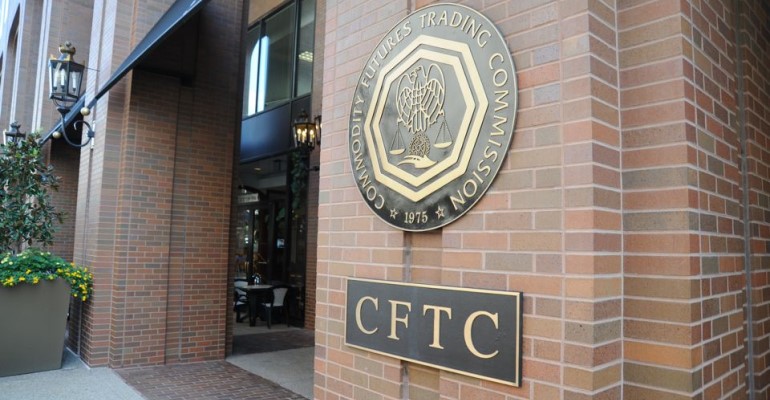CFTC finalizes position limits rule
Bona fide hedger definition ensures commercial end-users have the ability to effectively hedge commercial risk.

In a vote on Thursday afternoon, the U.S. Commodity Futures Trading Commission (CFTC) finalized a rule on position limits for derivatives. The final rule passed by a vote of 3-2.
The Dodd-Frank Wall Street Reform and Consumer Protection Act of 2010 mandates the CFTC, as it finds necessary, establish limits on speculative positions not considered bona fide hedges. Since 2011, multiple iterations of the rule have either been vacated by a federal court or never finalized. The latest rule clarifies and broadens the list of enumerated hedges; establishes position limits in the spot month for 25 physically settled core reference future contracts, cash settled futures, options on futures and economically equivalent swaps; and provides end-users flexibility in seeking approval for non-enumerated hedging exemptions.
Additionally, the Commission adopted new and amended definitions for use throughout the position limits regulations, including a revised definition of “bona fide hedging transaction or position” that includes an expanded list of enumerated bona fide hedges and a new definition of “economically equivalent swaps.” The Commission also amended rules governing exchange-set position limit levels and related exchange exemptions; established a new streamlined process for non-enumerated bona fide hedging recognitions for purposes of federal position limits; and amended certain regulatory provisions that would eliminate Form 204 (and the corresponding parts of Form 304), while also enabling the CFTC to leverage and receive cash-market reporting submitted directly to the exchanges by market participants.
This final rule is effective 60 days after publication in the Federal Register.
In his opening comments ahead of the vote, CFTC Chairman Heath Tarbert shared the Commission has issued five position limits proposals over the past 10 years. The first was adopted in 2011 but vacated by the U.S. District Court for the District of Columbia before it took effect. One proposal issued in 2013, and two more in 2016, were never finalized.
“All told, those four proposals received thousands of comments from the public—the vast majority of which objected to the proposals for good reason. Much ink was spilled, and many trees were felled over those proposals,” Tarbert said.
The rule strikes a balance with respect to the limits themselves, Tarbert added. The January proposal included significant increases to spot and non-spot limits for the legacy agricultural products. Many commenters were concerned about these increases, particularly for non-spot limits.
He explained open interest in many of the legacy grains contracts has doubled or tripled since the CFTC last updated position limits, reflecting the usefulness of these contracts as a benchmark for cash market transactions and faith in CFTC-regulated markets. “The non-spot limits we are adopting are the same percentage of today’s open interest as the 2011 limits were compared to open interest back then. Our markets have grown tremendously, and we cannot expect them to be subject to the same limits they were 10 years ago,” he said.
“This rule contains a clear definition of what practices constitute a bona fide hedge and therefore are not subject to position limits. This is critical to ensure all commercial end-users have the ability to effectively hedge commercial risk,” said Senate Agriculture Committee Chairman Pat Roberts (R., Kan.).
Meanwhile, Senate Agriculture Committee Ranking Member Debbie Stabenow (D., Mich.) criticized the rule which “fails to go far enough to protect consumers and producers from irresponsible commodity trading that has caused unnecessary spikes in prices for consumers,” a release from her office noted.
“When Wall Street traders make reckless decisions, consumers end up footing the bill,” the statement added. “In Dodd Frank, Congress clearly directed the CFTC to set reasonable limits that ensure speculators do not raise prices for consumers. This final rule ignores Congressional intent and fails to protect our markets.”
The National Grain and Feed Assn. welcomed the final rule. "NGFA has been working on this rulemaking for ten years, so it’s an exciting day to see this much-improved version of the rule approved. Now, we have some work to do reading and analyzing all the rule’s provisions. Our expectation is that the rule will preserve the critically important hedging and risk management strategies on which our industry has relied for years, and that it will provide some additional important tools to assist our members as they work with U.S. agricultural producers to manage their risk and optimize income from markets. We deeply appreciate the willingness of CFTC to be open to NGFA-member companies concerns through the rulemaking process," NGFA said in an email statement.
NGFA continues to carefully review the final rule, but based upon initial analysis believes it contains the following key elements:
• Spot-month position limits for corn, wheat and soybean futures contracts will increase from 600 to 1,200 contracts.
• Non-spot federal position limits for those commodities will increase dramatically. However, the CME Group will have authority to establish lower exchange position limits.
• Exchanges like CME will have broad authority to manage the hedge-exemption process, with CFTC retaining review authority.
• Bona fide hedging strategies important to the grain, feed and processing industry are maintained, and new bona fide hedges are enumerated for such strategies as hedges of unfilled anticipated requirements, anticipated merchandising, and unfixed price sales and purchases.
• Enumerated bona fide hedges are self-effectuating for purposes of federal hedge exemptions; that is, they do not require approval by the CFTC.
• Following exchange approval of a non-enumerated bona fide hedge, CFTC will have a 10-day review period, during which the market participant may take the hedge position.
About the Author(s)
You May Also Like





